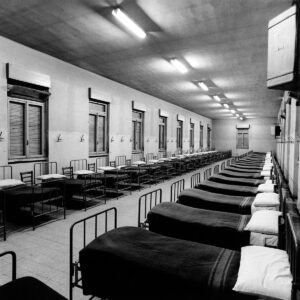milano \ gallery

AN ARCHIVE FOR MILAN
While working on the relationship between the structure of the city and things and people, I thought about a work that I had been wanting to do for some time: it is a work about the city where I live, about Milan, a city that has already lost a great deal of its past beauty, that is modern without being new, that puts together many contradictions of the civilization of machines and consumption. My idea does not involve a book, but an archive, a photographic archive of the city of Milan. I thought of Milan because it is a city that I don’t know well, I am familiar with a few houses, a few museums, the stations, some of its restaurants, some banks, the hospitals where I was hospitalized, the post office, a few of its cafés, cinemas, two or three theaters, and I have been to San Siro a couple of times. But what I would like to photograph in this city is above all what is unknown: that is to say, the interiors, the houses, what can’t be seen or that you don’t want to see, don’t want to show. The public interiors that I’m not familiar with, and also the ones that I know but that I have never looked at carefully. I want to take pictures of all this without the people, because what strikes us the most when we enter a place is the fact that people go there, it’s the people. Instead, I don’t want there to be any people, I want the protagonist to be a certain load-bearing structure that we call city, a disarticulated structure that brings an anonymous crowd, that changes every day, that passes through it every day, that each day is destined to pass through These are interiors that we never look at, either because we are distracted by the people, or because we have no interest in the people who inhabit them. The houses of blue-collar workers, white-collar workers, professionals, the rich, or else factories, companies, markets, prisons, schools. Finally, the focus, these interiors should have many things to talk about what life in the city is today. I realized the importance of taking pictures of interiors without people inside them a few years ago, when I photographed a public dormitory that was in perfect order, after everyone had left. The resulting image was so icy cold that the addition of the types of people who normally spend the night there would have made it too smoky or too sweet, as is the case in some populist painting from the late nineteenth century. I have a certain respect for people’s defenseless faces; I don’t want to exploit them for a point I’m trying to make. In recent years, often for specific or sociological reasons, the number of anonymous faces prey to their illness, the impotent faces of the ill have multiplied in books and magazines. I don’t believe it is necessary to use such means. I believe there is a way to photograph the hovel where a woman and her children live even without the woman and her children being there, while still achieving an eloquent image of their condition, an image that is objective and at the same time evocative of those people who are absent in the image. In 1953-1954, I, like others, took pictures that involved as many people as possible. Today, I would like to do the same thing but with this clarity. Those old pictures in Neorealist style are dear to me, they are one of my first attempts to establish a photographic contact with reality. I wanted to cast light on a message of which I felt I was the bearer, and at the same time I wanted to identify the most direct common thread that connects people, episodes, facts, places. The truth of the matter is that I was only looking for what I now think I have found: a discourse that is precise in terms of its ends, sure in its means, of which the only sample is the photograph of the public dormitory itself. In the city I made a series of photographs that were then used to create the set designs for Woyzeck directed by Puecher. Puecher had set the opera in our day, he had dressed the soldiers like political prisoners, so the military camp where the action took place was a lager. It came natural to find the images to be projected as a crucial part of the set design in that limbo where the city is no longer there and the country doesn’t as yet exist: there are power stations, landfills, works in progress to build avenues, the canals that were at once used for transportation and have now become sewers.
Other images, which do not appear here over time, have had Milan as their protagonist. But I decided to take some of them out of my archive: a series from the first years of my activity, taken at Bar Giamaica, and I think that it establishes an important moment from those years. Friends and artists in that place who met and created a subtle plot, where I found myself thinking and working more and more as time passed.
Da “La Fotografia” Fotografie e testi di Ugo Mulas, Giulio Einaudi Editore Torino 1973